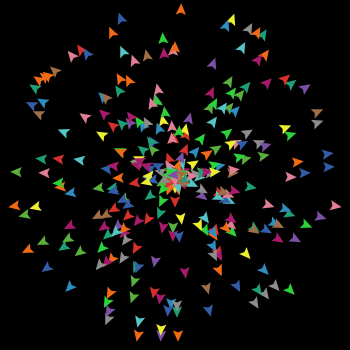

Making a new layer (left), and setting it to Multiply mode (right) 12, I am choosing the Multiply mode.įig 12. I’ll do this with a special layer designed for that purpose! Add a new layer with the button shown in fig.12, outlined in red.

It also brings to light things you simply get used to as you create something, for better or for worse.īecause I am only working on a single layer, I can go to Edit > Transform > Flip Horizontal. As such, it becomes very obvious where the mistakes are. The reason artists do this is that it momentarily “tricks” your brain into thinking it’s seeing your image for the first time. This is a holdover from my oil painting days, where I would have a giant mirror behind me, which I could use to see my painting flipped around. I’ll then simply fill in the gaps that are left behind with the brush I already have active.įig 10. I just made a selection and used the tool’s built-in widgets to rotate the head. I want the character to have a slight tilt to her, as to not be so rigid. Starting the modeling of soft light on the forms This means that the planes that face upward will receive slightly lighter values in the grayscale, planes that face to the side will be a little darker, and planes that face down will be the darkest. I’m imagining the light to be softly coming down from above. Still working with the airbrush, I’m building up some diffused lighting on the character’s face. Using the airbrush to achieve multiple looks 8 shows how multiple brush sizes from the same tool produce strokes that appear to be made by different tools!įig 8. I also change my brush size a lot, based on the stroke I want. This keeps the workflow moving, which maximizes the time you’re interacting with your art, rather than fixating on the digital tools. For instance, if I want to do some finer work, say, on the eye – instead of switching my tool altogether, I’ll first simply try adding more hardness to the airbrush. I will change that as I work, based on the stroke I want. 7, you can see I have the ‘Hardness’ set low. First, I am still working on just one layer! Also, about my brush choices: I am always changing brush settings. Switching to the Airbrush tool, I now block in very basic value decisions: the character will be dark, and the background will remain light.

#NETLOGO SCALE COLOR FREE#
If you are following this tutorial and just feel like painting along with me, feel free to simply copy or trace my drawing! After all, we are focused on painting technique here, not the planes of the head. The planes of the head are not the focus of this tutorial, but are an invaluable thing all artists should learn, as the knowledge will enable you to draw the head from any angle. I am building up the face with its major planes, thinking about the skull underneath and the general structure of the head. Notice that my lines are not just outlining the silhouette they are construction lines. She’ll be wearing a hat and coat, as if going for a crisp winter stroll. It will be a young girl with her head tilted up. I block in a rough construction for my character.

Clip Studio Paint offers so many great choices for this, you almost can’t go wrong! See fig. The brush you select is not to be fixated upon choose anything that you feel comfortable drawing with. I grabbed the Pencil tool and chose the Rough pencil brush. I chose this value because I tend to want lots of room to go darker (to add shadows and other dark elements), and only need a little room to go lighter. I selected a fairly light gray to begin with. So, let’s kill that white-canvas monster with the ‘Fill’ tool. This makes our decision-making so much less stressful at the outset. Oh, by the way, ‘values’ and ‘grayscale’ refer to the same thing. My settings when creating the new canvasīut never fear! This is precisely why we’re using the grayscale-to-color technique: we only have to worry about values to begin with. You’ll now be confronted by one of the scariest things in art: a blank white canvas, *gasp!*įig 2. 2 for the settings I used, but feel free to use whatever settings you like. Stage 2 is when we’ll add in the color and bring the piece to a rendered finish, fit for a portfolio or commission!įirst, let’s start a new canvas. We’ll deal with blocking in the character and its overall design. Stage 1 is a grayscale (or black-and-white) painting. We are going to do it in two overall stages.
#NETLOGO SCALE COLOR FULL#
We’ll be painting a character with basically human proportions, in full color.
#NETLOGO SCALE COLOR WINDOWS#
The main tools and windows we’ll be using in this paintingīefore we begin, let me outline what we’ll be doing. Hello and welcome to my tutorial on digital character painting! Clip Studio Paint is a great program, and as you’ll see, we only need a few of its many tools to do a good-looking painting.


 0 kommentar(er)
0 kommentar(er)
